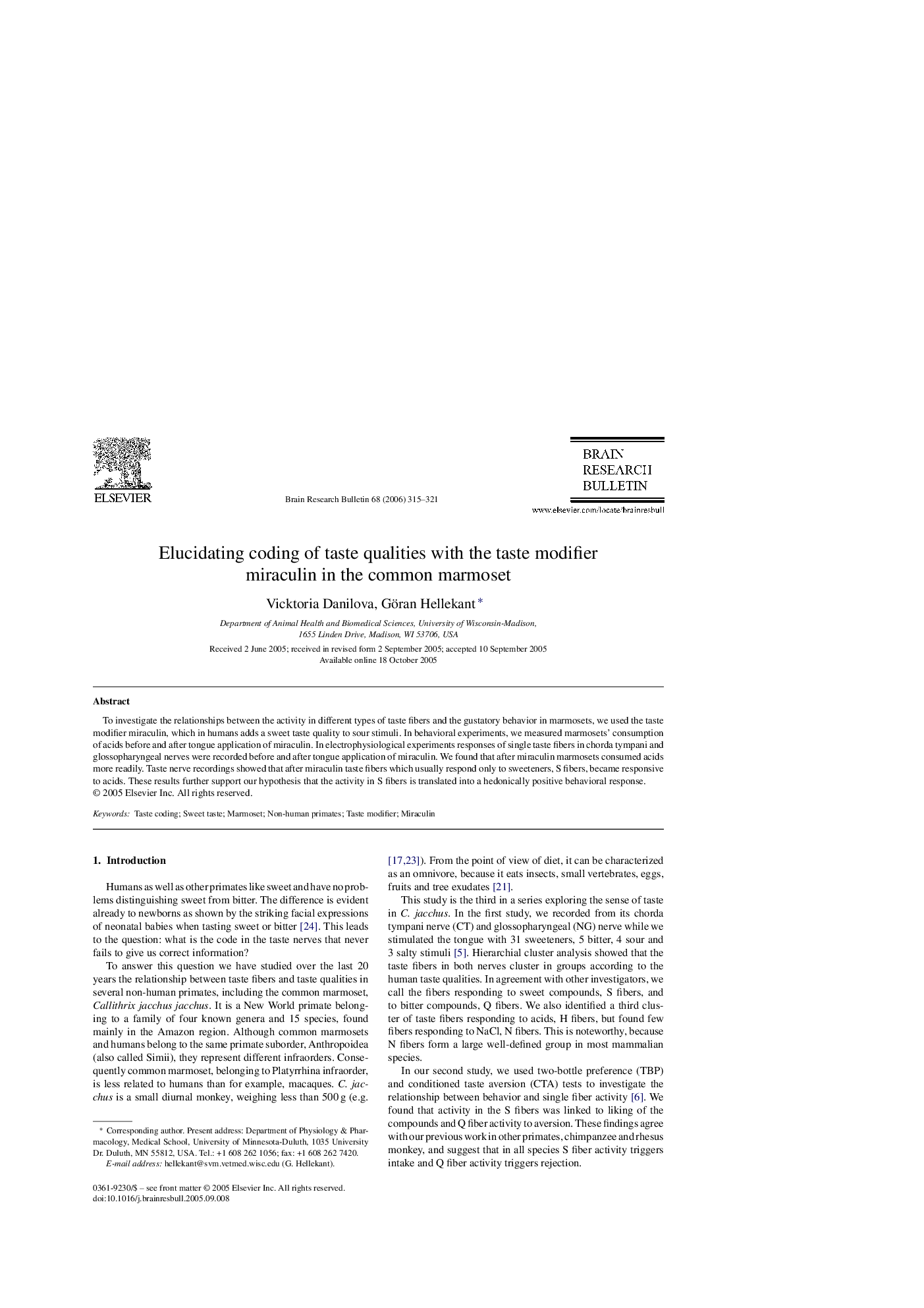| Article ID | Journal | Published Year | Pages | File Type |
|---|---|---|---|---|
| 4320443 | Brain Research Bulletin | 2006 | 7 Pages |
To investigate the relationships between the activity in different types of taste fibers and the gustatory behavior in marmosets, we used the taste modifier miraculin, which in humans adds a sweet taste quality to sour stimuli. In behavioral experiments, we measured marmosets’ consumption of acids before and after tongue application of miraculin. In electrophysiological experiments responses of single taste fibers in chorda tympani and glossopharyngeal nerves were recorded before and after tongue application of miraculin. We found that after miraculin marmosets consumed acids more readily. Taste nerve recordings showed that after miraculin taste fibers which usually respond only to sweeteners, S fibers, became responsive to acids. These results further support our hypothesis that the activity in S fibers is translated into a hedonically positive behavioral response.
